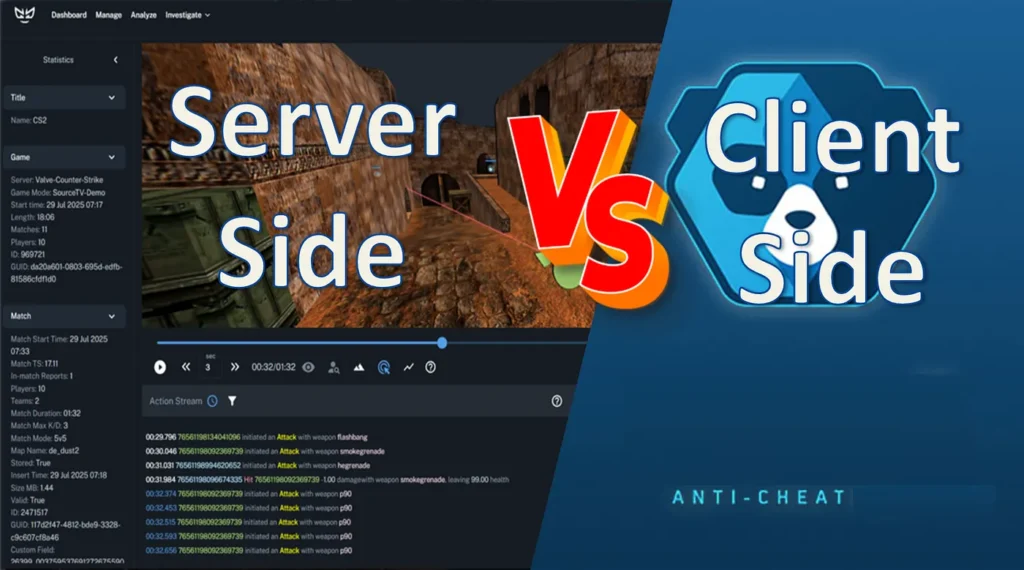
The short answer: No. And it never will.
The real answer: You need both. Always.
In the gaming industry, there’s been a growing narrative (which I also contributed to) that server-side anticheat is the future – that it’s “better” because it’s future-proof, and that client-side is “old school” and unnecessary.
It’s an appealing thought – until you actually understand what each one does.
Server-Side: The Untouchable Watcher
Server-side anticheat runs far away from the reach of cheaters. It observes player behavior, analyzes physics violations, detects impossible actions, and identifies patterns that reveal abuse. Because it understands the full context of the game, it can uncover both mechanical cheats – like aimbots, speedhacks, rapid fire, and even wallhacks – and behavioral abuse (AKA Griefing) such as AFK, camping, feeding, intentional friendly fire and chat or VOIP abuse. It’s future-proof because no matter how clever the hacker is, they can’t manipulate the server’s copy of reality.
But server-side has limits:
- It’s post-process. The abuse has to happen before it’s caught. That means the damage to the match, to the player experience is already done. It’s not a cop stopping a crime in progress – it’s a prosecutor building an airtight case after the fact – think Law & Order, but instead of months it does it in minutes.
- It’s compute-heavy. You can’t realistically analyze 100% of matches for a major AAA game. Even at 50% coverage, you’re pushing cost boundaries.
Client-Side: The Real-Time Shield
Client-side anticheat lives where the action happens – on the player’s machine. It can detect and block memory reads/writes, file tampering, and injected code in real time. That means cheats are stopped before the bullet is fired, before the wall is clipped through, before the player even realizes they were caught.
Yes, it can be bypassed, because it’s on the hacker’s turf. But when it works (and it often does), it stops the majority of low-to-mid sophistication attacks dead in their tracks.
The Two-Layer Defense
Think of it like a missile defense system:
- Iron Dome stops short-range rockets – the ones that are the most common and cause the most frequent harm.
- Arrow 3 handles the less common but devastating long-range missiles that bypass the first layer.
In anticheat:
- Client-side is your Iron Dome – stopping the majority of everyday cheating attempts instantly and preventing game file and memory corruption.
- Server-side is your Arrow 3 – catching the sophisticated threats that breach the first layer (preferably, after minutes of the abuse) and doing so in a way that hackers can’t erase.
Why ‘One or the Other’ Is a Dangerous
If you only rely on server-side, you’re letting every attack happen first and hoping you catch it after. If you only rely on client-side, you’re betting that your defense will never be bypassed – which it will.
Together, the synergy is massive:
- Client-side keeps the overall cheating volume down while feeding server side with insights on players, helping it get smarter.
- Server-side focuses on analyzing a smaller pool of suspicious activity in detail – reducing cost and improving accuracy, while also detecting toxic players that do not need to hack the game in order to be abusive.
This isn’t redundancy. It’s strategy.
Final Words
Server-side didn’t kill client-side. It completed it.
The smartest studios already know: the future of fair play isn’t about picking sides – it’s about layered defense. Because in the war on cheating, you don’t bring one weapon. You bring the whole arsenal.